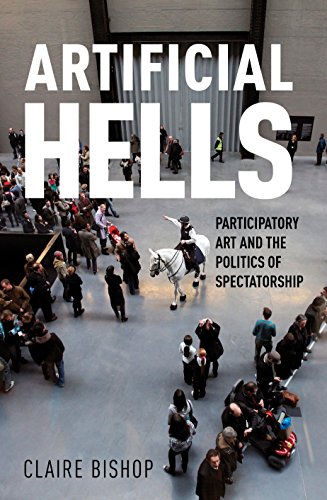Alexander Alberro, Blake Stimson (eds.): Conceptual Art: A Critical Anthology (1999)
Filed under book | Tags: · 1960s, aesthetics, art criticism, art history, art theory, conceptual art

“Compared to other avant-garde movements that emerged in the 1960s, conceptual art has received relatively little serious attention by art historians and critics of the past twenty-five years—in part because of the difficult, intellectual nature of the art. This lack of attention is particularly striking given the tremendous influence of conceptual art on the art of the last fifteen years, on critical discussion surrounding postmodernism, and on the use of theory by artists, curators, critics, and historians.
This landmark anthology collects for the first time the key historical documents that helped give definition and purpose to the movement. It also contains more recent memoirs by participants, as well as critical histories of the period by some of today’s leading artists and art historians. Many of the essays and artists’ statements have been translated into English specifically for this volume. A good portion of the exchange between artists, critics, and theorists took place in difficult-to-find limited-edition catalogs, small journals, and private correspondence. These influential documents are gathered here for the first time, along with a number of previously unpublished essays and interviews.”
Contributors: Alexander Alberro, Art & Language, Terry Atkinson, Michael Baldwin, Robert Barry, Gregory Battcock, Mel Bochner, Sigmund Bode, Georges Boudaille, Marcel Broodthaers, Benjamin Buchloh, Daniel Buren, Victor Burgin, Ian Burn, Jack Burnham, Luis Camnitzer, John Chandler, Sarah Charlesworth, Michel Claura, Jean Clay, Michael Corris, Eduardo Costa, Thomas Crow, Hanne Darboven, Raúl Escari, Piero Gilardi, Dan Graham, Maria Teresa Gramuglio, Hans Haacke, Charles Harrison, Roberto Jacoby, Mary Kelly, Joseph Kosuth, Max Kozloff, Christine Kozlov, Sol LeWitt, Lucy Lippard, Lee Lozano, Kynaston McShine, Cildo Meireles, Catherine Millet, Olivier Mosset, John Murphy, Hélio Oiticica, Michel Parmentier, Adrian Piper, Yvonne Rainer, Mari Carmen Ramirez, Nicolas Rosa, Harold Rosenberg, Martha Rosler, Allan Sekula, Jeanne Siegel, Seth Siegelaub, Terry Smith, Robert Smithson, Athena Tacha Spear, Blake Stimson, Niele Toroni, Mierle Ukeles, Jeff Wall, Rolf Wedewer, Ian Wilson.
Publisher MIT Press, 1999
ISBN 0262011735, 9780262011730
623 pages
Claire Bishop: Artificial Hells: Participatory Art and the Politics of Spectatorship (2012/2022)
Filed under book | Tags: · art, art criticism, art history, art theory, audience, contemporary art, dada, fluxus, participation, politics, proletkult, situationists, theatre

“Since the 1990s, critics and curators have broadly accepted the notion that participatory art is the ultimate political art: that by encouraging an audience to take part an artist can promote new emancipatory social relations. Around the world, the champions of this form of expression are numerous, ranging from art historians such as Grant Kester, curators such as Nicolas Bourriaud and Nato Thompson, to performance theorists such as Shannon Jackson.
Artificial Hells is the first historical and theoretical overview of socially engaged participatory art, known in the US as “social practice.” Claire Bishop follows the trajectory of twentieth-century art and examines key moments in the development of a participatory aesthetic. This itinerary takes in Futurism and Dada; the Situationist International; Happenings in Eastern Europe, Argentina and Paris; the 1970s Community Arts Movement; and the Artists Placement Group. It concludes with a discussion of long-term educational projects by contemporary artists such as Thomas Hirschhorn, Tania Bruguera, Paweł Althamer and Paul Chan.
Since her controversial essay in Artforum in 2006, Claire Bishop has been one of the few to challenge the political and aesthetic ambitions of participatory art. In Artificial Hells, she not only scrutinizes the emancipatory claims made for these projects, but also provides an alternative to the ethical (rather than artistic) criteria invited by such artworks. Artificial Hells calls for a less prescriptive approach to art and politics, and for more compelling, troubling and bolder forms of participatory art and criticism.”
Publisher Verso Books, London, 2012
ISBN 1844676900, 9781844676903
390 pages
Reviews: Josephine Berry Slater (Mute, 2012), Mechtild Widrich (caa.reviews, 2013), Marcus Verhagen (New Left Review, 2014), Kenn Watt (Drama Review, 2014), Kim Charnley (Art Journal, 2014), Joseph Henry (New Inquiry, 2012), Jaenine Parkinson (Vague Terrain, 2011), Ryan Wong (Hyperallergic, 2012), Alexander Provan (NY Observer, 2012), Leah Lovett (Dark Matter, 2013), David M. Bell (Political Studies Rev, 2017), Corinne Segal (Boston Review, 2012), Christine Korte (Public, 2013), Jennie Klein (PAJ, 2015).
PDF (7 MB, updated on 2019-3-18)
PDF (new ed., 2022, 38 MB, added on 2025-7-23)
Clement Greenberg: Homemade Esthetics: Observations on Art and Taste (2000)
Filed under book | Tags: · abstract art, abstract expressionism, aesthetics, art, art criticism, art theory, impressionism, painting, pop art

“In this work, which gathers previously uncollected essays and a series of seminars delivered at Bennington College in 1971, Greenberg provides his most expansive statement of his views on taste and quality in art. He insists that despite the attempts of modern artists to escape the jurisdiction of taste by producing an art so disjunctive that it cannot be judged, taste is inexorable. He maintains that standards of quality in art, ohe artist’s responsibility to seek out the hardest demands of a medium, and the critic’s responsibility to discriminate, are essential conditions for great art. He discusses the interplay of expectation and surprise in aesthetic experience, and the exalted consciousness produced by great art. Homemade Esthetics allows us to watch the critic’s mind at work, defending (and at times reconsidering) his controversial and influential theories. Charles Harrison’s introduction to this volume places Homemade Esthetics in the context of Greenberg’s work and the evolution of 20th century criticism.”
Foreword by Janice Van Horne Greenberg
Introduction by Charles Harrison
Publisher Oxford University Press, 2000
ISBN 0195139232, 9780195139235
256 pages

